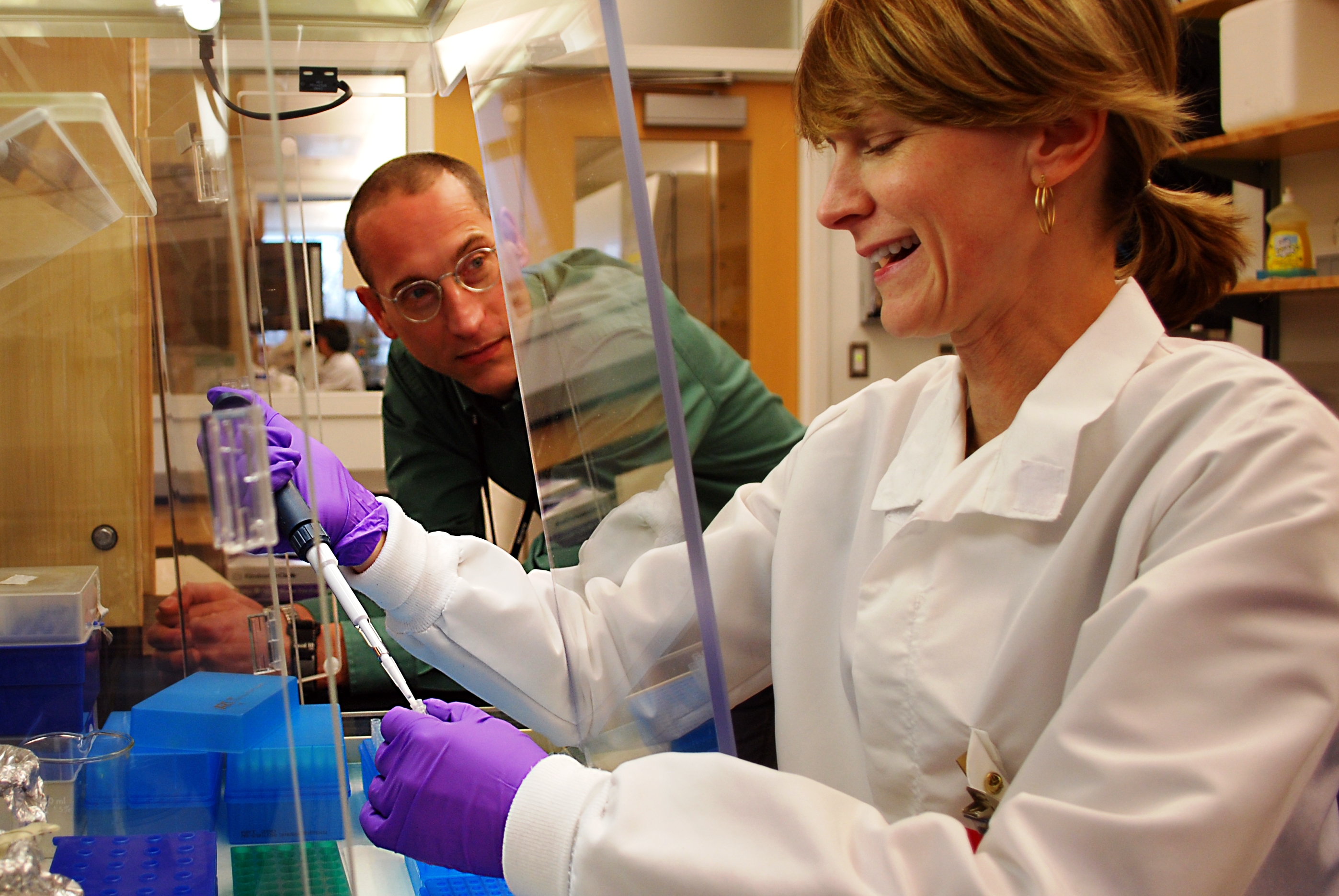Genetic comparison can identify mystery pathogens
 Organisms from all corners of the animal world arrive at the doors of the New York State Veterinary Diagnostic Laboratory and Animal Health Diagnostic Center (AHDC). Foreign or familiar, prevalent or peculiar, pathogens must reveal their true identities before veterinarians can begin to make sense of samples, diagnose diseases, and develop treatment plans.
Organisms from all corners of the animal world arrive at the doors of the New York State Veterinary Diagnostic Laboratory and Animal Health Diagnostic Center (AHDC). Foreign or familiar, prevalent or peculiar, pathogens must reveal their true identities before veterinarians can begin to make sense of samples, diagnose diseases, and develop treatment plans.
How do you identify a microscopic organism? The traditional method has guided doctors and scientists through the past 100 years. Smear a sample on an agar plate, a petri dish covered with gelatin made from seaweed, and study the culture as it grows. What shape does it take? Does it move or stay still? What is its biochemical profile? What food does it prefer? Scientists use these kinds of questions to match mystery organisms to those successfully identified in the past.
But sometimes matching lists of characteristics isn’t enough.
“We deal with some oddball organisms,” says Dr. Craig Altier, a microbiologist with big aspirations for the future of identifying small life-forms. While traditional methods of identification can reliably distinguish common or easily differentiated organisms, they shed less light on outliers, including newly mutated species, rare breeds of bacteria, and fraudulent fungi.
“Fungi look very similar under a microscope, and often biochemical differences between species prove undetectable,” says Altier. “We really needed a better way to tell such species apart. So when physical characteristics failed, we turned to genetics.”
Every individual has a unique DNA fingerprint, and so does every species. Evolution shakes the genetic dice many times over, but all species have certain genes that survive unchanged for generations.
“These highly conserved genes usually code for essential functional elements that would not work if they were changed, such as proteins required for basic cellular function,” says Altier. “They don’t vary much between individuals, but they do vary across species. We can use these genes to accurately identify organisms.”
Researchers have already been looking at conserved genes to map out relationships between species, and now Altier and his colleagues are adapting these techniques for veterinary medicine.
“We have finally reached a point where we can use these tools quickly and efficiently enough to diagnose disease,” says Altier. “Human medicine will benefit as well, but the technique is most valuable in veterinary medicine because there are so many different species of host animals and pathogens.”
The new approach uses PCR techniques to amplify DNA from selected conserved genes. Cornell’s on-campus DNA Sequencing Center decodes samples into a string of about 500 bases of A, T, C, or G, then compares them to samples in the National Center for Biotechnology Information’s genetic database to look for similarities.
The technique is already revolutionizing diagnostics, revealing relationships that could never have been found before. “One day we received a swab from the flipper of a sick sea lion,” says Altier. “We had no idea what kind of organisms might live there, but we found the answer quickly through DNA sequencing and a quick genetic comparison. We couldn’t have done that without this database.”
Genetic comparison tools raise the bar for diagnostic accuracy. “With the old methods we frequently got stuck saying one organism is ‘like’ another,” says Altier. “Now we can usually hone in on a more exact label. We match sequences down to the letter to find efficient, accurate diagnoses.”
Comparative genetics can also expand our knowledge of a given disease.
“We may find the same kinds of pathogens in different animals we never knew could host them, or on the same host species but at a different body site,” says Altier. “These techniques have already shed new light on how organisms evolve and how different species are related. We may soon begin discovering new important pathogens previously left unnoticed.”
Even unidentified organisms could prove priceless down the road. Many currently unidentified sequences float nameless through the database waiting to be compared. “When enough of these orphans begin to match,” says Altier, “we will begin to discover new disease-causing agents.”